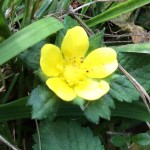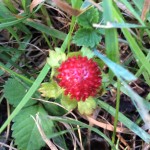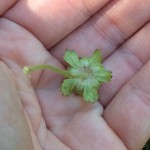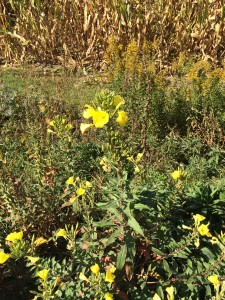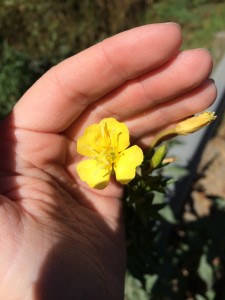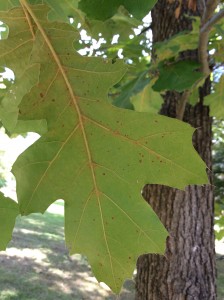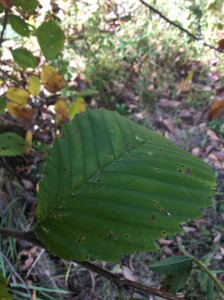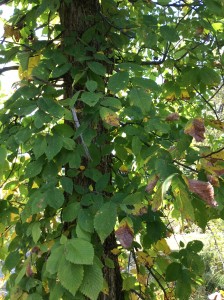Family #1: Rosaceae
Species Name: Duchesnea indica
Common Name: Indian Strawberry
Description: Observed in an open-cultivated lawn, growing in slightly moist, acidic-soil. This plant can be best described as a yellow flower with five petals, five sepals (and 5 toothed bracts just underneath) , with many stamen. The leaves are mostly basal (this plant had an alternate leaf also) with three, serrate leaflets. The fruit is red and juicy and has achenes (dry; ovary contains one cell and one seed) surrounding the surface.
Family #2: Apiaceae
Species Name: Dacus carota
Common Name: Wild Carrot, Queen Anne’s Lace, or Bird’s Nest
Description: Observed along the south side of the roadside, growing in moderately moist, slightly acidic soil. The plant was about two feet tall and had a pubescent stem. The small, white flowers were grown in a flat umbel and have pinnate bracts that fold up to form a seed.
Plant on sight ID list #1: Oenothera biennis
Family Name: Onagraceae
Common Name: Common Evening Primrose
Description: Observed along the west side of the roadway, growing in a steep ditch. The flower has four, yellow petals, two pairs of long sepals fused together , 8 stamen, and one inferior gynoecium with four stigmas. The stem was about 4 feet tall and had little hairs. The leaves were alternate and lanceolate in shape with entire margins.
Plant on sight ID list #2: Quercus rubra
Family Name: Fagaceae
Common Name: Red Oak
Description: Observed in an open cultivated lawn along the driveway in full sunlight, growing in slightly acidic soil. Leaves are simple, alternate, lobed with pointy tips.
Specific Character #1: Parallel Venation
Family Name: Aspargacae
Species Name: Agave sp.
Described: Observed along the west side of a slightly, downward driveway, growing in slightly acidic soil. The veins of the leaves run parallel.
Specific Character #2: Pinnate Venation
Family Name: Ulmacae
Species Name: Ulmus rubra
Common Name: Slippery Elm
Description: Observed on the west side on the top part of the downward slope driveway, growing in slightly acidic soil. The leaves are simple, alternate, serrated and have a rough top surface with a soft, pubescent surface underneath. The venation is pinnate having one main vein extending from the asymmetrical base to the acute tip with many smaller veins that branch off.
